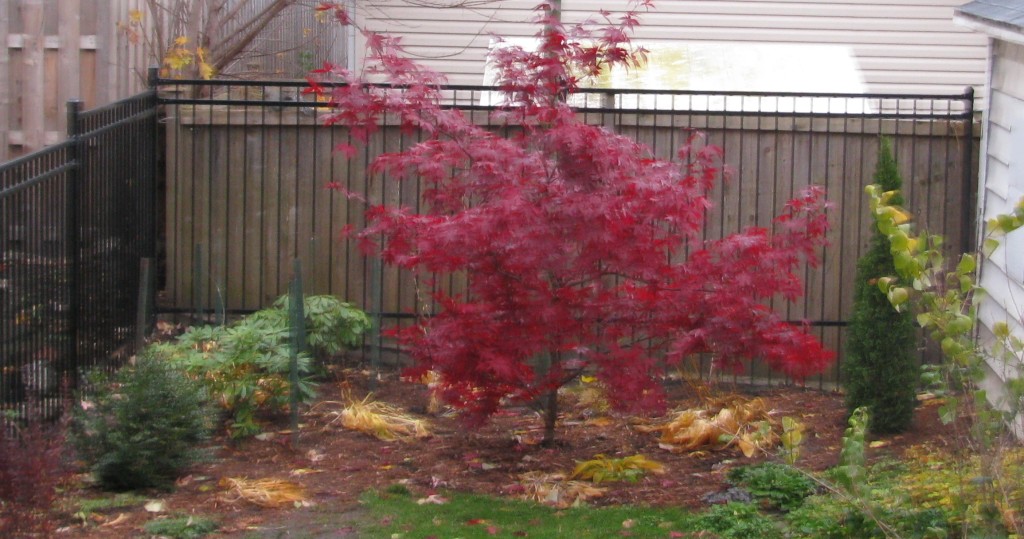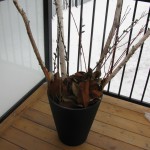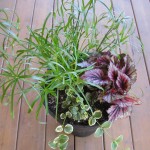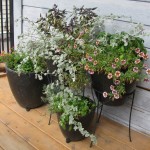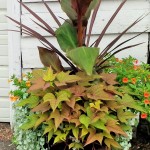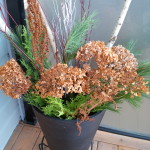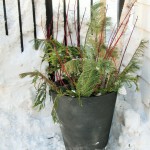January to March:
• Enjoy indoor plants and gardens.
• Get inspiration for projects through travel and/or garden magazines, shows and seed catalogues.
• Discuss garden plans and projects with landscape or garden designer.
April:
• Start seedlings indoors for many vegetables and flowers.
• When soil is no longer soggy and vulnerable to compaction, some garden clean-up and removal of any plant wraps or covers can be done.
• Inspect garden to assess how well it has survived winter. This includes noting emerging plants and flowers as well as examining any evidence of insects or other problems.
May:
• Prune and shape trees and shrubs, except: wait for early flowering shrubs to finish flowering; delay removing limbs of trees with heavy sap flow, e.g. maples, birch.
• Once soil is workable and warm, transplant trees and shrubs, and divide dormant late flowering plants.
• Sow grass seed on lawn patches and apply spring turf fertilizer.
• Tools and irrigation systems should be checked.
• Plant tubs of flowers, herbs and/or other edibles.
• Prepare beds, sow seeds and plant when risk of frost has passed, around May 24th. A busy time for all gardeners!
June:
• Tender plants can go in the garden now.
• Most early flowering perennials which have finished blooming, can be split or moved if needed.
• Cut or deadhead most spent blooms on annuals and perennials. A few seedheads can be left for birds. Encourage larger fruits in fall, by selectively pruning flowers/fruit on shrubs and trees.
• Summer turf fertilizer can be applied in mid-June.
July:
• Ensure plants receive the water that they need.
• Many plants are in summer dormancy.
• Enjoy the garden’s bounty.
August:
• Trees, such as maples, can be trimmed or thinned.
• Late August, begin planting fall annuals in the garden and tubs.
September:
• Daffodils are planted now so they can begin to root before freeze-up. Other bulbs and corms can be planted later.
• Good time for planting conifers.
• Fall turf fertilizer can be applied.
October:
• While perennials are still in leaf, good time to assess garden and start to plan future changes.
• Harvest crops, prune late-flowering plants and shrubs, and bring tender plants indoors.
• New beds can be prepared, and fertilizer, composted manure or other additives worked into the soil so that the beds will be ready in the spring.
• Ensure plants, particularly conifers and broadleaf evergreens, are well watered before winter freeze-up. Anti-desiccants can be applied to reduce water loss during winter.
• Deciduous trees, many shrubs – especially early flowering ones – and roses can be transplanted in late fall.
• Install stakes around broadleaf evergreens and other plants requiring extra protection from cold temperatures and winds.
• Remove leaves from lawns.
• Prepare irrigation systems and water barrels, and give tools an extra check-over (clean, sharpen, oil) before winter.
November to December:
• Dormant lawn seeding and late fall turf fertilizer can be applied.
• Protect shrubs and trees from wildlife damage with sprays and/or wraps.
• Before severe storms or by Christmas, attach protective textile or snow-fence to stakes (see October).
• Set out tubs with displays of evergreen boughs and decorative stems to help add enjoyment to the winter garden.
Tubs with early spring pussy willows, then summer plantings, followed by dried fall flowers, and lastly, decorative winter stems and boughs.
Ottawa, zone 5a under Canada’s new Plant Hardiness Zones
